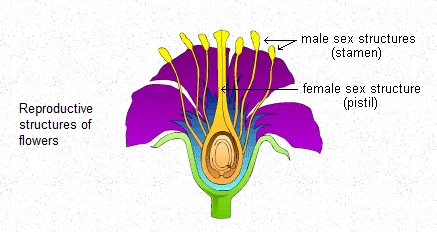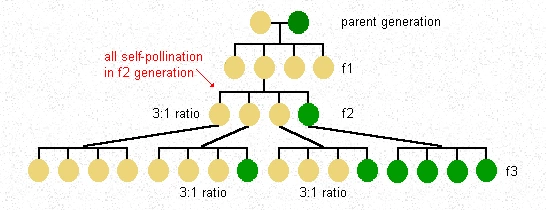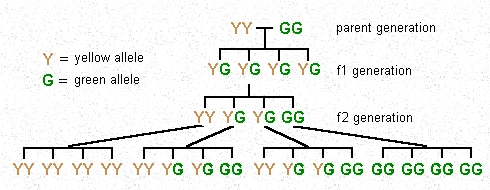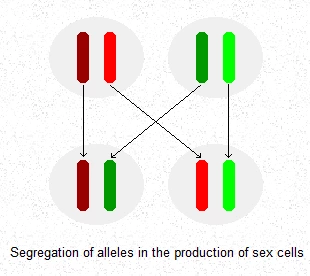GENETICS & CONTRIBUTION OF MENDEL
Genetics & Contribution of Mendel
Breeding plants and animals were done by the farmers selectively for thousands of years to produce more useful hybrids. It was because of the lack of proper knowledge or the ignorance of the actual mechanisms of governing inheritance that made it quite difficult to get a good result out of it. It was only in the last century and a half that careful laboratory experiments were carried out to get the perfect knowledge of these genetic mechanisms. There were inventions of better microscopes by the year 1890 that helped biologists in finding out the basic facts of sexual reproduction and cell division. It helped a lot to get the right understanding as to what happens when it comes to transmission of hereditary traits from parents to children. To explain hereditary, a number of hypotheses were suggested. Still, it was Gregor Mendel who was a Central European monk who was able to explain it in the best way. His idea got published in the year 1866, but it took a long time until he was recognized in 1900. It should be noted that it was long after his death that his ideas got accepted. When it comes to his early adult life, he taught Physics, Mathematics, and Greek where he was also found to be spending in relative obscurity. He became the abbot of his monastery in his later days where he put aside his scientific work.
Observation by Gregor Mendel
Mostly Mendel’s research dealt with a plant where he discovered the basic underlying principles of heredity. It was applied to people as well as animals as the genetic mechanisms are same for all complex life forms. Mendel discovered that without any blending of parent characteristics, certain traits show up in offspring. For example, when it comes to the white or purple pea flowers, there is no appearance of intermediate colours in the offspring of cross-pollinated pea plants. It was observed by Mendel that there were seven traits that were quite easy to recognize where it also occurred in one of two forms apparently.
- flower colour is purple or white
- the position of flower is axil or terminal
- pod colour is yellow or green
- the length of the stem is long or short
- pod shape is inflated or constricted
- seed shape is round or wrinkled
- seed colour is yellow or green
In that time, the leading theory in Biology stated that it was from generation to generation that the inherited traits blended. So, the theory which was put up by Mendel that offspring plants are not shown by these traits with intermediate forms was critically very important. This ‘blending theory’ was accepted by most of the leading scientists in the 19th century. A wrong theory was proposed by Charles Darwin, which was known as, “pangenesis.” It was stated that the things we do during our lifetime affects the hereditary “particles” in our bodies. It was thought that the modified particles migrate via blood to the reproductive cells. And so, it was believed that the next generation might inherit it.
Related Videos:
- Important Terminologies Of Genetics
- Briefly mention the contribution of T.H. Morgan in genetics.
- Father of human genetics/biochemical genetics is
- Father of human genetics is
- Genetics recombination occurs through
Mendel’s focus
For the focus of his research, Mendel picked common garden pea plant. The reason behind this is the fact that they can be grown easily in large numbers where manipulation can be done with their reproduction. There are both male and female reproductive organs in pea plants. So, this makes it possible to either cross-pollinate or self-pollinate with another plant. It was possible for Mendel to cross-pollinate pure bred plants with particular traits selectively. So, this conclusion was based on the nature of genetic inheritance.

In cross-pollinating plants that either produce green or yellow pea seeds, it was found by Mendel that there were yellow seeds for the first offspring generation (f1). But there is a 3:1 ration of yellow to green for the following generation (f2)

It was found that in the later generations as well this 3:1 ratio occurred. Mendel realized that this was the exact way to understand the basic mechanisms of inheritance.

So from these experimental results, he came to three important conclusions:
1. that “units” or “factors” which are passed on to descendants unchanged determines the inheritance of each trait (these units are known as genes)
2. that one such unit is inherited by an individual from each parent for each trait
3. that an individual might not be shown up by a trait but can still be passed on to the next generation.
The starting parent plants for pea seed colour were homogeneous in this experiment. In other words, it meant that there were two identical forms (or alleles) of the gene which were 2 greens and 2 yellows. Coming to the f1 generation plants, all were heterogeneous, which meant that two different alleles were inherited by them – one from each parent plant. So it proved that it was not the phenotype that was observed. Instead, genotype had observable physical characteristics.

It can be seen that Y allele has been inherited by each of the f1 generation plants from one parent whereas a G allele from the other. There are equal chances of passing on either G or Y alleles when the f1 plants breed. The phenotype is yellow when the genotype for pea seed colour is YG (heterogeneous.) It can also be found that there is no alteration of the recessive green one by the dominant yellow allele.
The observation by Mendel from these experiments can be summarized as below:
1. the principle of segregation
2. the principle of independent assortment
The principle of segregation states that only one allele passes from each parent to an offspring when there is a separation of the pair of alleles of each parent. This is known as meiosis that occurs during the process of sex cell formation.

In regard to the principle of independent assortment, there is a passing of different pairs of alleles to offspring each other independently.
Mendel is the father of Genetics, where it should be noted that he disproved Lamarck’s Theory of the inheritance of acquired characteristics.
Important Chapters:





Similar Questions
Genetic basis OF inheritance || Genetics Introduction || Pre-Mendelism || Mendelism - Greger Johann Mendel Reasons for Selecting Garden Pea || Mendel Reasons For Success OF Mendel Reasons for Non-Recognition OF Mendels Work
View SolutionGenetic basis OF inheritance || Genetics Introduction || Pre-Mendelism || Mendelism- Greger Johann Mendel Reasons for Selecting Garden Pea || Mendel Reasons for Non-Recognition OF Mendels Work
View Solution
Knowledge Check
- Question 1 - Select One
Who is considered to be the ‘father of modern genetics’?
A. Charles Darwin
B. Gregor Mendel
C. Alexander Fleming
D. Otto HahnAABCCDDB - Question 2 - Select One
Who is considered to be the ‘father of modern genetics’?
A. Charles Darwin
B. Gregor Mendel
C. Alexander Fleming
D. Otto HahnAABCCDDB - Question 3 - Select One
Which of the criteria contributed to Mendel's success ?
I. Selection of pea plant.
II. Knowledge of history.
III. One character at one time.
IV. His statistical knowledge
Choose the correct optionAI,II,III and IVBII and IIICI, III and IVDIV , III and II
Mendelism:- Gregor Johann Mendel, Characters Chosen By Mendel Strategy OF Mendel Work Selection OF Pea By Mendel Reasons For Success OF Mendel Reasons For Non Recognition OF Mendel Work Rediscovery OF Mendel Work
View SolutionSome Important Terms OF Genetics ||Mendelism-Introduction ||Rediscovery OF Mendel's Work
View SolutionGenetics (आनुवंशिकी)|Mendel's Experiment (मेंडल के प्रयोग)|OMR
View SolutionReproduction And Cell Division|Sexual Reproduction And Variation|Gene And Allele|Genetics|Some Important Terms|Mendelism
View SolutionTo determine the genetic constitution of a violet flower plant at F2, Mendel crossed it with a white flower plant. This cross is called as :-
View Solution

